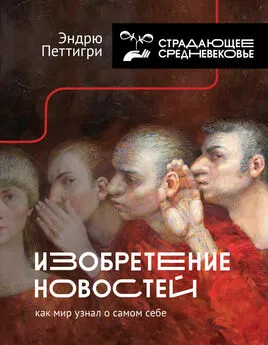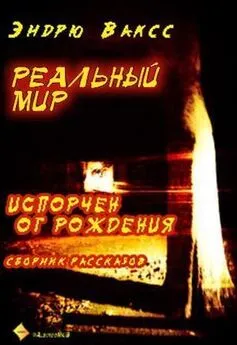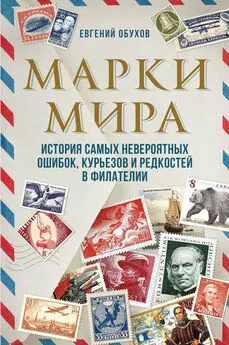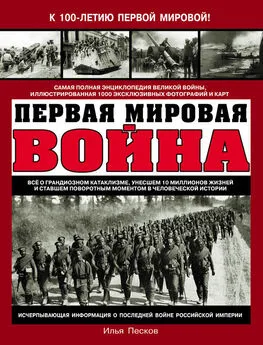Эндрю Петтигри - Изобретение новостей. Как мир узнал о самом себе
- Название:Изобретение новостей. Как мир узнал о самом себе
- Автор:
- Жанр:
- Издательство:АСТ
- Год:2021
- Город:Москва
- ISBN:978-5-17-127024-7
- Рейтинг:
- Избранное:Добавить в избранное
-
Отзывы:
-
Ваша оценка:
Эндрю Петтигри - Изобретение новостей. Как мир узнал о самом себе краткое содержание
Автор охватывает период почти в четыре века — от допечатной эры до 1800 года, от конца Средневековья до Французской революции, детально исследуя инстинкт людей к поиску новостей и стремлением быть информированными. Перед читателем открывается увлекательнейшая панорама столетий с поистине мульмедийным обменом, вобравшим в себя все доступные средства распространения новостей — разговоры и слухи, гражданские церемонии и торжества, церковные проповеди и прокламации на площадях, а с наступлением печатной эры — памфлеты, баллады, газеты и листовки. Это фундаментальная история эволюции новостей, начиная от обмена манускриптами во времена позднего Средневековья и до эры триумфа печатных СМИ.
В формате PDF A4 сохранен издательский макет.
Изобретение новостей. Как мир узнал о самом себе - читать онлайн бесплатно ознакомительный отрывок
Интервал:
Закладка:
525
John Roger Paas, The German Political Broadsheet, 16001700, 11 vols (Wiesbaden: Harrassowitz, 1985–2012); Elmer A. Beller, Propaganda during the Thirty Years War (Princeton, NJ: Princeton University Press, 1940).
526
Выше в главе 4.
527
Robert W. Scribner, For the Sake of Simple Folk: Popular Propaganda for the German Reformation (Cambridge: Cambridge University Press, 1981). О критике неявного аргумента о том, что клиенты были в основном из более низких социальных слоев, чем покупатели брошюр, см. мою работу: Reformation: The Culture of Persuasion (Cambridge: Cambridge University Press, 2005), глава 5. Примеры эффективного использования католиками полемических образов второй половины XVI века см.: Andrew Pettegree, ‘Catholic Pamphleteering’, in Alexandra Bamji et al. (eds), The Ashgate Research Companion to the Counter-Reformation (Aldershot: Ashgate, 2013), pp. 109-26.
528
Paas, German Political Broadsheet, vol. 2, P272-337.
529
William A. Coupe, The German Illustrated Broadsheet in the Seventeenth Century: Historical and Iconographical Studies, 2 vols (Baden Baden: Heintz, 1966).
530
Beller, Propaganda, plate II, pp. 18–20.
531
Paas, German Political Broadsheet, vol. 2, P452-6.
532
Там же, т. 3, с. 652–9, для этого и других представлений о поисках Фредерика. Были даже французская и голландская версии: т. 3, с. 133–9.
533
Там же, с. 784–90.
534
Там же, с. 708–13.
535
Там же, с. 675–6.
536
Там же, том 1, с. 23.
537
W. Lahne, Magdeburgs Zerstoring in der zeitgenossischen Publizistik (Magdeburg: Verlag des Magdeburger Geschichtsvereins, 1931). Более короткая версия на английском: Andrew Cunningham and Ole Peter Grell, The Four Horsemen of the Apocalypse: Religion, War, Famine and Death in Reformation Europe (Cambridge: Cambridge University Press, 2000), pp. 170-99.
538
Weber, ‘Der grosse Krieg und die fruhe Zeitung’, pp. 36-7.
539
Там же, с. 38–9.
540
Paas, German Political Broadsheet , vol. 5, P1,336-47.
541
Lahne, Magdeburgs Zerstorung, pp. 147-55; Cunningham and Grell, Four Horsemen, p. 182.
542
О шведской пропаганде: G. Rystad, Kriegsnachrichten und Propaganda wahrend des Dreissigjahrigen Krieges (Lund: Gleerup, 1960).
543
Paas, German Political Broadsheet, vol. 5, P1,430-52; Beller, Propaganda, plate XI, pp. 30-1.
544
Paas, German Political Broadsheet , vol. 6, P1,585, 1,587.
545
Kremer, ‘Johann von den Birghden’, pp. 31-4.
546
Там же, с. 34–9.
547
Paas, German Political Broadsheet , vol. 6, P1,770-8.
548
Там же, с. 1554–5, 1614-15.
549
Там же, с. 1635–6, 1812.
550
Как, например, в случае Британской библиотеки 1750.b.29, фолио более сто предметов.
551
Weber, ‘Der grosse Krieg und die fruhe Zeitung’, pp. 39–40.
552
Paas, German Political Broadsheet , vol. 7, P2,174-5.
553
Nadine Akkerman, ‘The Postmistress, the Diplomat and a Black Chamber?: Alexandrine of Taxis, Sir Balthazar Gerbier and the Power of Postal Control’, in Robyn Adams and Rosanna Cox (eds), Diplomacy and Early Modern Culture (Basingstoke: Palgrave, 2011), pp. 172-88.
554
Выше в главе 9.
555
Joad Raymond, Pamphlets and Pamphleteering in Early Modern Britain (Cambridge: Cambridge University Press, 2003); Jason Peacey, Politicians and Pamphleteers: Propaganda during the English Civil Wars and Interregnum (Aldershot: Ashgate, 2004). Joseph Frank, The Beginnings of the English Newspaper, 1620–1660 (Cambridge, MA: Harvard University Press, 1961).
556
Caroline Nelson and Matthew Seccombe, British Newspapers and Periodicals, 1641–1700: A Short-Title Catalogue (New York: Modern Language Association of America, 1987).
557
John Barnard and Maureen Bell, ‘Statistical Tables’, in Barnard and D. F. McKenzie (eds), The Cambridge History of the Book in Britain. Volume IV, 1557–1695 (Cambridge: Cambridge University Press, 2002), pp. 779-84; Raymond, Pamphlets and Pamphleteering , pp. 202-75.
558
Jason McElligott, ‘1641’, in Joad Raymond (ed.), The Oxford History of Popular Print Culture. I: Cheap Print in Britain and Ireland to 1660 (Oxford: Oxford University Press), pp. 599–608.
559
Ethan Shagan, ‘Constructing Discord: Ideology, Propaganda and the English Responses to the Irish Rebellion of 1641’, Journal of British Studies, 36 (1997), pp. 4-34.
560
Joad Raymond, Making the News: An Anthology of the Newsbooks of Revolutionary England 1641–1660 (Moreton-in-Marsh: Windrush Press, 1993), pp. 35–52.
561
Иногда очень большими тиражами. Чтобы рекламные объявления были распространены по всем приходам Англии в 1649 году, типографиям заказали от девяти до двенадцати тысяч экземпляров. Angela McShane, ‘Ballads and Broadsides’, in Raymond (ed), Popular Print Culture, p. 348.
562
C. John Sommerville, The News Revolution in England: Cultural Dynamics of Daily Information (Oxford: Oxford University Press, 1996).
563
Там же, с. 35.
564
Raymond, Making the News, pp. 92-9. For its principal editor see P. W. Thomas, Sir John Berkenhead, 1617–1679: A Royalist Career in Politics and Polemics (Oxford: Oxford University Press, 1969).
565
Sommerville, News Revolution , p. 51.
566
Jason Peacey, ‘The Struggle for Mercurius Britanicus: Factional Politics and the Parliamentarian Press, 1643-6’, Huntington Library Quarterly, 68 (2005), pp. 517-43.
567
Joseph Frank, Cromwell’s Press Agent: A Critical Biography of Marchamont Nedham, 1620–1678 (Lanham, MD: University Press of America, 1980). For excerpts from the Mercurius Britanicus, see Raymond, Making the News , pp. 332-50.
568
Raymond, Making the News , pp. 350-74.
569
Helmer J. Helmers, ‘The Royalist Republic: Literature, Politics and Religion in the Anglo-Dutch Public Sphere (1639–1660)’ (Doctoral Dissertation, Leiden, 2011).
570
Paas, German Political Broadsheet, vol. 8, P2,225-36.
571
Peacey, Politicians and Pamphleteers , pp. 132-54.
572
Francis F. Madan, A New Bibliography of the Eikon Basilike (Oxford: Oxford Bibliographical Society Publications, III, 1949).
573
Blair Worden, Literature and Politics in Cromwellian England: John Milton, Andrew Marvell, Marchamont Nedham (Oxford: Oxford University Press, 2007); idem, ‘Marchamont Nedham and the Beginnings of English Republicanism, 1649–1656’, in David Wootton (ed.), Republicanism, Liberty and Commercial Society, 1649–1776 (Stanford, CA: Stanford University Press, 1994), pp. 45–81.
574
Jason Peacey, ‘Cromwellian England: A Propaganda State?’, History, 91 (2006), pp. 176-99; Raymond, Making the News, pp. 364-79.
575
The best modern study is Jonathan Israel, The Dutch Republic: Its Rise, Greatness and Fall, 1477–1806 (Oxford: Oxford University Press, 1995).
576
Folke Dahl, ‘Amsterdam, Earliest Newspaper Centre of Western Europe: New Contributions to the History of the First Dutch and French Corantos’, Het Boek, XXV (1939), 3, pp. 185-6.
577
Helmers, ‘Royalist Republic’.
578
Ниже, глава 14.
579
Meredith Hale, ‘Political Martyrs and Popular Prints in the Netherlands in 1672’, in Martin Gosman (ed.), Selling and Rejecting Politics in Early Modern Europe (Louvain: Peeters, 2007), pp. 119-34.
580
Michel Reinders, Printed Pandemonium: Popular Print and Politics in the Netherlands 1650-72 (Leiden: Brill, 2013).
581
Выше в главе 9. Hubert Carrier, La presse et la Fronde, 1648–1653: Les Mazarinades. I. La conquete de l’opinion. II. Les hommes du livre, 2 vols (Geneva: Droz, 1989-91).
582
Maximillian E. Novak, Daniel Defoe, Master of Fictions (Oxford: Oxford University Press, 2001), pp. 289–328.
583
Craig Calhoun (ed.), Habermas and the Public Sphere (Cambridge, MA: Harvard University Press, 1992); Nick Crossley and John Michael Roberts, After Habermas: New Perspectives on the Public Sphere (Oxford: Blackwell, 2004).
584
Aytoun Ellis, The Penny Universities: A History of the Coffee-House (London: Seeker & Warburg, 1956); Heinrich Jacob, Coffee: The Epic of a Commodity (London, 1935; reprinted Short Hills, NJ: Burford Books, 1998); Brian Cowan, The Social Life of Coffee: The Emergence of the British Coffeehouse (New Haven, CT: Yale University Press, 2005); Steve Pineus, ‘Coffee Politicians Does Create: Coffeehouses and Restoration Political Culture’, Journal of Modern History, 67 (1995), pp. 807-34; Mark Knights, Representation and Misrepresentation in Later Stuart Britain: Partisanship and Political Culture (Oxford: Oxford University Press, 2005).
585
Gilles Feyel, L’annonce et la nouvelle. La presse d’information en France sous l’ancien regime (1630–1788) (Oxford: Voltaire Foundation, 2000).
586
Peter Burke, The Fabrication of Louis XIV (New Haven, CT: Yale University Press, 1992).
Читать дальшеИнтервал:
Закладка:










